#Catacomb of Callixtus
Explore tagged Tumblr posts
Text

Jesus raises Lazarus from the Dead, Catacomb of Callixtus, Rome, 3rd Century A.D.
#art#history#jesus christ#ancient rome#roman empire#Catacomb of Callixtus#Rome#3rd century#lazarus#early christianity
12 notes
·
View notes
Text
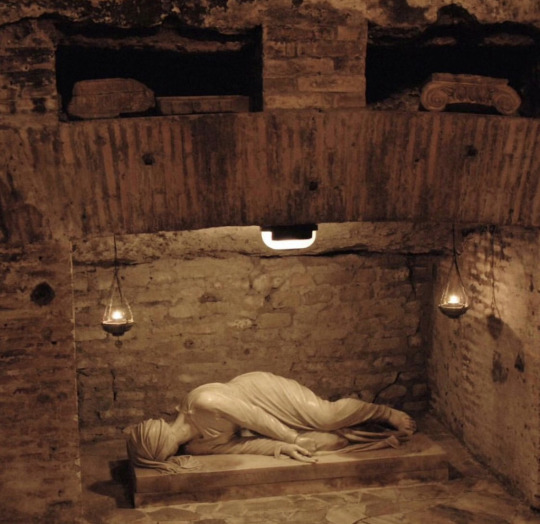
The Catacombs of Callixtus in Rome
44 notes
·
View notes
Text
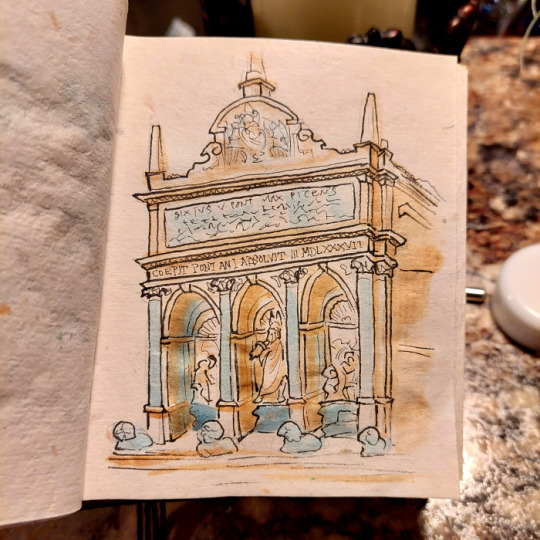
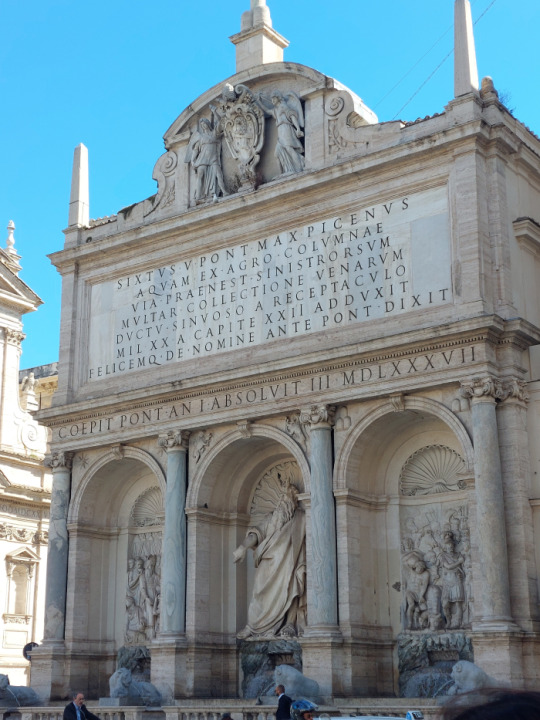

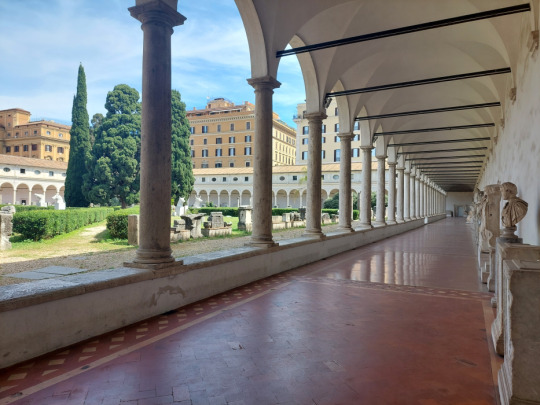

Italian Adventure travelogue paintings!
43: Fontana dell'Acqua Felice, also known as the Fountain of Moses, Rome.
44: Museo Nazionale Romano, Rome.
45: The Catacombs of Saint Callixtus, Rome. This one I've done totally from memory, because photography wasn't allowed at all, in the interest of keeping the many tour groups from moving through the space at a quick pace.
#fontana dell'acqua felice#fountain of moses#museo nazionale romano#catacombs of saint callixtus#rome#art#watercolor#painting#jojo seames#jojo's italian adventure 2024
9 notes
·
View notes
Text

Greetings from the Catacombs of St. Callixtus in Rome, Lazio, Italy
Italian vintage postcard
#vintage#tarjeta#italy#briefkaart#catacombs#postcard#lazio#greetings#photography#postal#carte postale#callixtus#sepia#ephemera#historic#rome#ansichtskarte#italian#postkarte#postkaart#photo
5 notes
·
View notes
Text
Closed Starter — Down in the Dark.

It’s been a few days (chalking up to nearly a week now) since the boys had left camp for their fated quest, or so Vasilios says. The quest so far has had its up and downs, leading the two demigods to unexpected turns to some places and narrowly escaped encounters with monsters. But with teamwork and skills put together, the two had the odds in their favour. Days after days of shadow-travelling all over the place and Vasilios being ill for another few days due to the lengthy distances, this quest had the boys now in the bustling city of Rome Italy. While there were a handful of tourism sights and a variety of attractions the city had to offer; the duo weren’t here to sightsee, as they had their own plans to carve here in Rome. And that was to find the Catacombs of Callixtus…
Once more the two had spent a day of wandering the city, looking for other clues and traces to give them another step closer to their goal as they were now standing around in front of a touristy hot spot for a quick break. Vasilios’ eyes were glued to the large statues surrounded with crystal blue waters that made up the famous Trevi Fountain, his thoughts drowned out from the running water and the bustling crowds of tourists and locals wandering to and fro. His arms were resting against the terrace that borderlines the fountain, he looked to be in a daze while taking in the smells of nearby cafes and restaurants, and feeling the light spray of water on his cheeks. He brought the bottled water to his lips for a short swig and he exhaled, his leg bouncing absentmindedly as he fished out his phone from his pockets to take a quick photo of the fountain.
His eyes then wandered to the Son of Aphrodite as he turned away from the fountain, and he leaned back against the terrace. “So,” Vasilios starts off, taking another brief sip of his drink. “St. Callixtus Catacombs, how the hell are we gonna get down there without having to get into the Vatican?”
@aphroditesfavechild

#dream fragments#percy jackson#percy jackson roleplay#percy jackson rp#pjo roleplay#pjo rp#riordanverse rp
37 notes
·
View notes
Text
St Cecilia by Stefano Maderno (1599)
In Saint Cecilia in Trastevere, where her relics are kept (supposedly built on the site of her 3rd century house)-
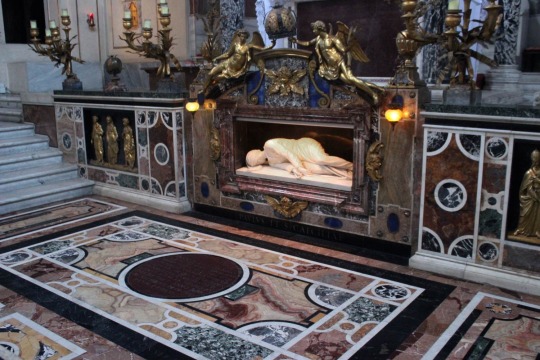
And the same sculpture in the location of her original tomb, in the Catacomb of Callixtus on the Appian Way-
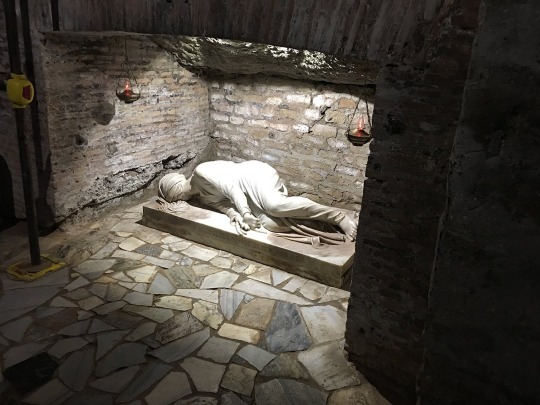
196 notes
·
View notes
Note
hi lys!!! <3 i am here for your match yo event! it’s so cute omg may i get a masc haikyuu match?
about me: sagittarius. enfp. my hobbies include writing, reading, i love making things (like crocheting, clay sculptures, keychains, even baking, etc) and i love haunted things! i own a ouija board, i love exploring abandoned buildings and areas lol
in a partner i’d like someone who’s funny. gotta be able to laugh together first and intelligent. i hope this is good, lys! i can’t wait for who you match me with 🫶🏽

- 𝐖𝐡𝐞𝐧 𝐢𝐧 𝐑𝐨𝐦𝐞 ...
𝐖𝐢𝐭𝐡 𝐎𝐢𝐤𝐚𝐰𝐚 𝐓𝐨𝐨𝐫𝐮 ೃ࿔ ✈︎ ⋆°•☁︎








𝐖𝐞𝐥𝐜𝐨𝐦𝐞 𝐭𝐨 𝐈𝐭𝐚𝐥𝐲, 𝐦𝐨𝐫𝐞 𝐬𝐩𝐞𝐜𝐢𝐟𝐢𝐜𝐚𝐥𝐥𝐲 𝐑𝐨𝐦𝐞, 𝐰𝐡𝐞𝐫𝐞 𝐰𝐨𝐫𝐥𝐝 𝐰𝐨𝐧𝐝𝐞𝐫𝐬 𝐜𝐚𝐧 𝐛𝐞 𝐞𝐱𝐩𝐥𝐨𝐫𝐞𝐝 𝐥𝐢𝐤𝐞 𝐧𝐞𝐯𝐞𝐫 𝐛𝐞𝐟𝐨𝐫𝐞. 𝐁𝐞𝐰𝐚𝐫𝐞 𝐭𝐡𝐞 𝐜𝐚𝐭𝐚𝐜𝐨𝐦𝐛𝐬!

it was actually oikawa’s idea to jet off to italy. the two of you needed a change of pace, and sun in the mediterranean ought to do the trick. literally everyone and their mothers knew you guys were going on vacation since oikawa would always find a way to sneak it into conversation. iwa called to ask you to lock oikawa in the colosseum before you come back. all you did was laugh, and then someone took mild offence to that.
one of the must-visit locations the both of you wanted to visit were the catacombs of saint callixtus, which span over 400 miles underground with many different levels. it felt other-worldly, surrounded by art and intricate carvings, as well as the resting places of many different popes. this guy actually did quite a bit of research on this, and wouldn’t stop giving fun facts, as you went along the tunnels, cooing at the skulls on the walls. man got majorly humbled when a tour guide pointed out a “fact” that he said was not true.
by the end of the week, your camera roll was filled with dozens upon dozens of pictures. they were either the hot asf type photos akin to the typical it couple photoshoots with the sunset, pretty in the background, or the goofiest things you’ve ever seen. there was one photo where oikawa was licking the leaning tower of pisa, and too many photos of the two of you copying the poses of the statues.

event!
5 notes
·
View notes
Text
The 10 Most Ancient and Stunning Churches Across the Globe
Old buildings are amazing to see, but some offer more than just beautiful design or old art. Many of the oldest buildings are also places of worship, which makes them even more special for visitors. Here are a few of the prettiest ones!
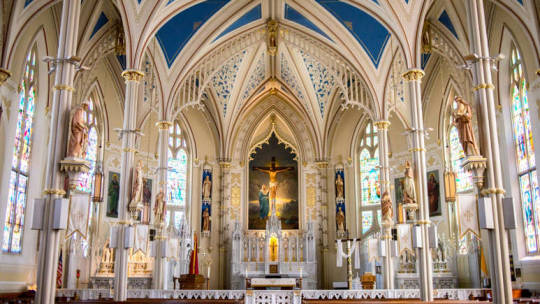
1. Temple of Augustus and Livia (France, 1st Century)

2. The Pantheon (Italy, 125)

3. Catacombs of Callixtus (Italy, 218)

4. Monastery of Saint Thaddeus (Iran, AD 239)
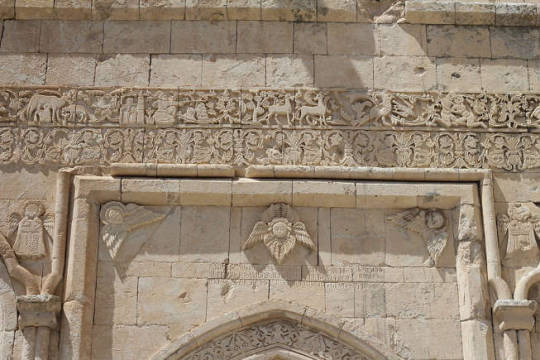
5. Dura-Europos Church (Syria, 241)

6. Aqaba Church (Jordan, 293)

7. Monastery of Saint Anthony (Egypt, 298)

8. Etchmiadzin Cathedral (Armenia, 301)
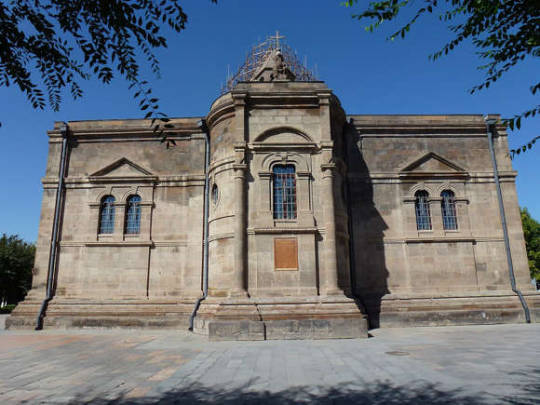
9. Cathedral of Saint Domnius (Croatia, AD 305)

10. Arch of Galerius (Greece, AD 306)

3 notes
·
View notes
Text
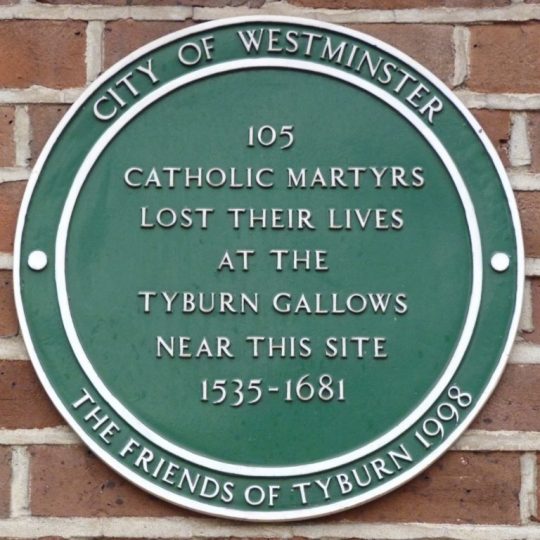
SAINTS JANUARY 20
St. Alban Bartholomew Roe, 1642 A.D. Missionary and martyr, one of the Forty Martyrs of England and Wales. Alban is believed to have been born in Bury St. Edmund's, England, about 1580. He converted to Catholicism and went to the English College at Douai, where he was dismissed for an infraction of discipline. In 1612 he became ordained Benedictine at Dieulouard, France. From there he was sent to England. In 1615 he was arrested and banished. In 1618 he returned to England and was imprisoned again. This imprisonment lasted until 1623, when the Spanish ambassador obtained his release. In 1625, once again having returned to England to care for Catholics, Alban was arrested for the last time. For seventeen years he remained in prison and was then tried and condemned. Alban was sentenced with Thomas Reynolds, another English martyr. They were hanged, drawn, and quartered at Tyburn on January 21, 1642.
Bl. Thomas Reynolds, 1642 A.D. English martyr. Born Thomas Green at Oxford, he left England and studied at Reims, France, and at Valladolid and Seville in Spain. Ordained in 1592, he went to England but was exiled in 1606. Thomas returned and labored for the faith until his arrest in 1628. He spent fourteen years in prison until he was hanged, drawn, and quartered at Tyburn, with Blessed Alban Bartholomew Roe. Thomas was eighty at the time.
Bl. Edward Stransham, 1586 A.D. English martyr born and educated at Oxford, England. Studying at Douai and Reims, France, Edward was ordained in 1580 and was sent back to England in 1581. He worked in London and Oxford until his arrest. Condemned, Edward was martyred at Tyburn. He was beatified in 1929.
ST. SEBASTIAN, MARTYR, St. Sebastian was commonly invoked as a protector against the plague. According to historical records, he defended the city of Rome against the plague in 680. His association with the plague could be because he survived being shot full of arrows and in pagan belief, pestilence was delivered by arrows shot by the gods above. Jan. 20
POPE ST FABIAN, MARTYR. Fabian was Pope for 14 years. He maintained relations with Eastern Christians, and divided Rome into seven diaconates for the assistance of the poor. Pope Fabian was imprisoned during the Decian persecution and died in 250. He is buried in the catacombs of St Callixtus, and is honoured as a martyr. Jan. 20
St. Brigid, 6th century. Known as St. Brigid of Kilbride, venerated in the diocese of Lismore. St. Brigid of Kildare, one of the patrons of Ireland, visited Kilbride. This Brigid is also known as Briga.
St. Vimin, 6th century. Scottish bishop, supposedly the founder of the monastery of Holywood. In some lists he is called Wynnia or Gwynnin.
St. Lawdog, 6th century. Saint of Wales who has four churches commemorating his memory in the diocese of St. David’s, Wales.
Bl. Cyprian Michael Iwene Tansi, Igbo Nigerian ordained a Roman Catholic priest of the Archdiocese of Onitsha, Nigeria on December 19, 1937. Feastday Jan 20
2 notes
·
View notes
Text


St. Cecilia, Patron of Music -by Stefano Maderno
Catacombs of Saint Callixtus - Rome, Italy.
She was firstly buried in the catacombs in that exact position, immortalized by the sculptor Stefano Maderno. In the ninth century the remains of her body and the original sculpture were moved to the church of Saint Cecilia in Trastevere – her former home.
#i didn't find the century of when the statue but i think i was the third? idk#the christians used to hate representing saints and christ as statues cause it reminded them of the classic greek statues#and they were like “oh no we can't do that too we're not PAGANS”#so the statues representing christ and all that started appearing in the renaissance#around that time#we were studying catacombs and she hasn't left my mind#statues#art#art history
1 note
·
View note
Text
The Hidden Treasures Of Rome
Rome, the capital of Italy, is a city steeped in history, art, and culture. It's no surprise that it's often referred to as an open-air museum due to the wealth of hidden treasures it holds. While many tourists flock to iconic sites like the Colosseum, Roman Forum, and the Vatican, there are numerous lesser-known gems that deserve exploration. Here are some hidden treasures of Rome:
Basilica of San Clemente: This church is a historical layer cake. On the surface, it appears as a beautiful medieval church, but beneath it, there are earlier Christian and even ancient Roman structures. Descend through the layers to explore Rome's history.
Galleria Sciarra: Tucked away in a small alley near the Trevi Fountain, this Art Nouveau gallery features stunning frescoes and intricate decorations that are often overlooked by tourists.
Aventine Keyhole: On top of the Aventine Hill, you'll find the Priory of the Knights of Malta. Peering through the keyhole in its imposing door reveals a perfectly framed view of St. Peter's Basilica.
Villa Doria Pamphilj: This vast park is Rome's largest public park and is often overlooked by tourists. It's a peaceful place to escape the city's hustle and bustle, with walking paths, fountains, and hidden statues.
Catacombs of Priscilla: While the Catacombs of Callixtus and San Sebastiano are more famous, the Catacombs of Priscilla are equally fascinating and less crowded. They contain early Christian frescoes and burial chambers.
Capuchin Crypt: Beneath the Church of Santa Maria della Concezione dei Cappuccini, you'll find a macabre but artistically arranged display of the bones of Capuchin monks. It's a unique and eerie experience.
Villa Farnesina: This Renaissance villa is a masterpiece of Italian art and architecture. It's home to beautiful frescoes by Raphael and other renowned artists but is often overshadowed by the Vatican museums.
Monti Neighborhood: Located between the Colosseum and Termini Station, Monti is a charming, bohemian neighborhood filled with artisan shops, cozy cafes, and narrow cobblestone streets.
Appian Way: Explore the ancient Appian Way, one of the most important Roman roads. It's lined with ancient tombs, ruins, and peaceful countryside. The Catacombs of San Callisto and the Church of Domine Quo Vadis are notable stops along the way.
Villa Torlonia: Once the residence of Mussolini, this villa now serves as a public park with neoclassical buildings, beautiful gardens, and a museum dedicated to the villa's history.
Palazzo Spada: This 16th-century palace is home to an optical illusion by Borromini. The palace's courtyard seems much longer than it is due to a cleverly designed perspective gallery.
Ponte Fabricio: Known as the oldest Roman bridge in Rome, it connects Tiber Island to the Trastevere district and provides beautiful views of the Tiber River.
These hidden treasures of Rome offer a glimpse into the city's rich history, art, and culture beyond the well-known tourist attractions. Exploring these lesser-known sites can provide a more intimate and authentic experience of the Eternal City.
0 notes
Photo

Today’s poem. Oddly enough, Pope St Callixtus is not buried in the catacombs that bear his name.
#pope#saint callixtus#catacombs#tomb#cemetery#christianity#paganism#change#conversion#new deity#old deities#poetry#david louis posner
2 notes
·
View notes
Photo

THE DESCRIPTION OF SAINT CECILIA The Patron of Musicians, Sacred Music, Choirs and Hymns Feast Day: November 22
"Arise, soldiers of Christ, throw away the works of darkness and put on the armor of light."
Cecilia was born of a patrician family in Rome in about 200-230 AD. She wore a coarse horsehair garment beneath her clothes of rank, fasted, and vowed herself to God. Despite her vow of virginity, she was forced by her parents to marry a nobleman named Valerian. During the wedding, Cecilia sat apart singing to God in her heart, and for that, she was later declared the saint of musicians.
When the time came for her marriage to be consummated, she told Valerian, these words: 'I have an angel of God watching over me. If you touch me in the way of marriage, he will be angry, and you will suffer. But if you respect my maidenhood, he will love you as he loves me.'
When Valerian asked to see the angel, Cecilia replied that he could see the angel if he would go to the third milestone on the Via Appia and be baptized by Pope Urban I. After following Cecilia's advice, he saw the angel standing beside her, crowning her with a chaplet of roses and lilies.
The angel told to Valerian: 'I have a crown of flowers for each of you. They have been sent from paradise as a sign of the life you are both to lead. If you are faithful to God, He will reward you with the everlasting perfumes of heaven.'
She also converted the brother of her husband, Tiburtius.
From that time the two young men dedicated themselves to good works. Because of their ardor in burying the bodies of martyred Christians, both Valerian and Tiburtius were arrested. The prefect Almachius told them that if they would sacrifice to the gods, they could go free. They refused, and Valerian rejoiced when he was handed over to be scourged. The prefect wanted to give them another chance, but his assessor warned him that they would simply use the interim to give away their possessions so that they couldn't be confiscated. They were beheaded in Pagus Triopius, four miles from Rome. With them was an officer named Maximus, who had declared himself a Christian after witnessing their fortitude. Cecilia buried the three and then decided to turn her home into a place of worship. Her religion was discovered, and she was asked to refute her faith. She converted those who were sent to convince her to sacrifice to the gods.
Shortly afterwards, Cecilia was arrested.
In court, Almachius debated with her for some time. She was sentenced to be suffocated to death in the bathroom of her house. The furnace was fed seven times its normal amount of fuel, but the steam and heat failed to stifle her. A soldier sent to behead her struck at her neck three times, and she was left dying on the floor. She lingered for three days, during which time the Christians thronged to her side, and she formally made over her house to Urban and committed her household to his care. It was the year 222-235 AD in Sicily.
Cecilia was buried next to the papal crypt in the catacombs of Saint Callixtus. In 817, Pope Saint Paschal I discovered her grave in 817, which had been concealed from the Lombard invader Aistulf in 756, and translated her body to beneath the main altar of what was later called the titulus Sanctae Caeciliae, which translates as 'the church founded by a lady named Cecilia.'
During the renovation of the church in 1599, Cardinal Paolo Emilio Sfondrati, the nephew of Pope Gregory XIV, opened her tomb and found her holy remains incorrupt. Even the green and gold of her rich robe had not been injured by time. Thousands had the privilege of seeing her in her coffin, and many have been blessed by miracles.
5 notes
·
View notes
Text
SAINT OF THE DAY (November 22)
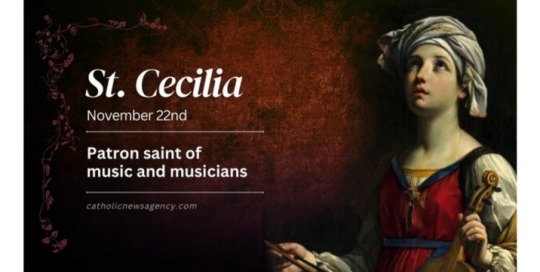
St. Cecilia's family was one of the principal families of Rome. According to the cultural custom of the time, Cecilia's family betrothed her to a pagan nobleman named Valerian despite her consecration to God.
On their wedding night, Cecilia told Valerian that she had sworn to remain a virgin before God and that an angel guarded her body, protecting her virginity from violation.
She told Valerian that he would be able to see this angel if he went to the third milestone along the Via Appia and was baptized by Pope Urban I.
Valerian went to the milestone as Cecilia had instructed, and there he was baptized. She later converted his brother as well.
During that era, it was forbidden for anyone to bury the bodies of Christians, so newly-baptized Valerian and his brother dedicated themselves to burying the bodies of all the Christians they found.
For this, they were arrested and brought before a judge who ordered them to worship the Roman god Jupiter.
They were martyred when they refused to deny their Christian faith. The police then came for Cecilia and strongly advised her to renounce her faith.
In reply, she told them that she would prefer to die than to denounce the true faith.
According to legend, upon hearing her response, they brought her to a large oven with the intention of suffocating her with the hot and toxic gasses it emitted.
However, instead of choking, Cecilia began to sing. Infuriated, her persecutors attempted to behead her, but after three strokes of the sword, Cecilia was still alive and her head was not severed.
The soldiers then left her covered in blood in her own home, where she remained for three days before she died.
St. Cecilia was buried in the Catacomb of Callixtus and later transferred to the Church of Santa Cecilia in Trastevere.
The church Santa Cecilia in Trastevere was built on the site of the house where she lived.
In 1599, her body was found still incorrupt, seeming to be asleep.
St. Cecilia is known for "singing in her heart to the Lord" upon her wedding day, despite her consecration to God.
She is the patron saint of musicians and poets because of this sentiment and her alleged singing within the oven during her martyrdom.
Her fortitude may inspire the modern Catholic in the trials of life and inspire one to find God within music.
4 notes
·
View notes
Photo

Elevation of the Host, Solemn Mass for the feast of Saint Callixtus in the Catacombs of Saint Callixtus.
Monday, 14 October 2019: the Feast of Saint Callixtus. This afternoon I was privileged to serve as deacon for a solemn Mass sung in the catacombs of Saint Callixtus. The catacombs are, famously, burial sites at the outskirts of the ancient city of Rome. The Christians used them to bury their dead, since the dirt was very easy to dig, and became rock-hard after being exposed to air, thus allowing an elaborate network of tunnels and chambers. The Christians also celebrated Mass in the catacombs: not just to avoid the attention of those who would persecute them, but more importantly to honor the martyrs buried there. Christians have linked the witness of the martyrs with the offering of the holy Sacrifice of the Mass from the very earliest days.
In fact, it was in these very catacombs of Saint Callixtus that Saint Lawrence was captured, as he served as deacon at a Mass offered by the pope, Saint Sixtus. Without intentionally calling it to mind, that link was at the center of my prayer during the Mass: “I am serving as deacon in the very place that Lawrence was.” This is the beauty of the relics of the Church: we have a physical link to the people who have gone before us in the faith, who have given us an example of authentic witness, and who even now intercede for us in heaven. This is why the tradition of the Church is essential to her constitution: we have one link with God--the mediator Christ Jesus--who became incarnate in Galilee about 2000 years ago. He taught the Gospel to His Apostles and instructed them to teach the rest of the world. They taught their disciples, and then handed the task on to them as they went to their rest and reward. In this way, the very words of Christ have come down to us, and we have no access to them apart from the living Tradition of the Church.
Although I had the great privilege of being in the place of Sixtus’ martyrdom and Lawrence’s capture, as well as Callixtus’ first burial site (he has since been moved to Santa Maria in Trastevere), I am reminded that the physical place itself is not the most important element of this Tradition. Rather, most important is the Mass itself, in which we all are brought back to the foot of the Cross on Calvary. Indeed, the offering of the sacrifice of the Mass is not different from the sacrifice of Calvary. They are one and the same sacrifice, offered once for all, which the Mass makes present in all places and for all peoples. It is for this reason that the Church’s liturgical worship is not, and must not be treated as, arbitrary, for its very temporal continuity back to the Apostolic age is a sign of the unity of the sacrifice. And it is in this Mass--the continually-renewed sacrifice of Calvary that has been the strength of Christians from the time of the Apostles--that we join the “cloud of witnesses” in worshiping the one true God, world without end.
Saint Callixtus, and all you holy popes and martyrs: pray for us!
0 notes
Text
The Church remembers St. Fabian of Rome, Bishop and Martyr.
Ora pro nobis.
Pope St. Fabian (c. AD 200 – 20 January 250) was the Bishop of Rome from 10 January 236 to his death in AD 250. Fabian’s feast day is commemorated on January 20, the same as Saint Sebastian, in whose church his sepulcher lies in Rome.
According to the Liber Pontificalis, Fabian was a noble Roman by birth, and his father’s name was Fabius. Nothing more is known about his background. The legend concerning the circumstances of his election is preserved by the fourth-century writer Eusebius of Caesarea (Church History, VI. 29). After the short reign of Pope Anterus, Fabian had come to Rome from the countryside when the new papal election began. “Although present,” says Eusebius, Fabian “was in the mind of none.” While the names of several illustrious and noble churchmen were being considered over the course of thirteen days, a dove suddenly descended upon the head of Fabian. To the assembled electors, this strange sight recalled the gospel scene of the descent of the Holy Spirit on Jesus at the time of his baptism by John the Baptist. The congregation took this as a sign that he was marked out for this dignity, and Fabian was at once proclaimed bishop by acclamation.
During Fabian’s reign of 14 years, there was a lull in the storm of persecution which had resulted in the exile of both Anterus’ predecessor Pontian and the antipope (and later saint) Hippolytus. Fabian had enough influence at court to effect the return of the bodies of both of these martyrs from Sardinia, where they had died at hard labor in the mines. The report that he baptized the emperor Philip the Arab and his son, however, is probably a legend, although he did seem to enjoy some connections at court, since the bodies of Pontian and Hippolytus could not have been exhumed without the emperor’s approval. According to the sixth-century historian Gregory of Tours, Fabian sent out the “apostles to the Gauls” to Christianise Gaul in AD 245. Fabian sent seven bishops from Rome to Gaul to preach the Gospel: Gatianus of Tours to Tours, Trophimus of Arles to Arles, Paul of Narbonne to Narbonne, Saturnin to Toulouse, Denis to Paris, Austromoine to Clermont, and Saint Martial to Limoges.
He also condemned Privatus, the originator of a new heresy in Africa. The Liber Pontificalis says that Fabian divided the Christian communities of Rome into seven districts, each supervised by a deacon. Eusebius (VI §43) adds that he appointed seven subdeacons to help collect the acta of the martyrs—the reports of the court proceedings on the occasion of their trials. There is also a tradition that he instituted the four minor clerical orders: porter, lector, exorcist, and acolyte. However most scholars believe these offices evolved gradually and were formally instituted at a later date. His deeds are thus described in the Liber Pontificalis: “He divided the regiones into deaconships and made seven sub-deaconships which seven secretaries oversaw, so that they brought together the deeds of the martyrs faithfully made whole, and he brought forth many works in the cemeteries.”
The Liberian Catalogue of the popes also reports that Fabian initiated considerable work on the catacombs, where honored Christians were buried, and where he also caused the body of Pope Pontian to be entombed at the catacomb of Saint Callixtus. With the advent of Emperor Decius, the Roman government’s tolerant policy toward Christianity temporarily ended. Decius ordered leading Christians to demonstrate their loyalty to Rome by offering incense to the cult images of deities which represented the Roman state. This was unacceptable to many Christians, who, while no longer holding most of the laws of the Old Testament to apply to them, took the commandment against idolatry with deadly seriousness. Fabian was thus one of the earliest victims of Decius, dying as a martyr on AD 20 January 250, at the beginning of the Decian persecution, probably in prison rather than by execution. Fabian was buried in the catacomb of Callixtus in Rome. The Greek inscription on his tomb has survived, and bears the words: Fabian, Bishop, Martyr. His remains were later reinterred at San Sebastiano fuori le mura by Pope Clement XI where the Albani Chapel is dedicated in his honour.
Almighty God, who gave to your servant Fabian boldness to confess the Name of our Savior Jesus Christ before the rulers of this world, and courage to die for this faith: Grant that we may always be ready to give a reason for the hope that is in us, and to suffer gladly for the sake of our Lord Jesus Christ; who lives and reigns with you and the Holy Spirit, one God, forever and ever. Amen.
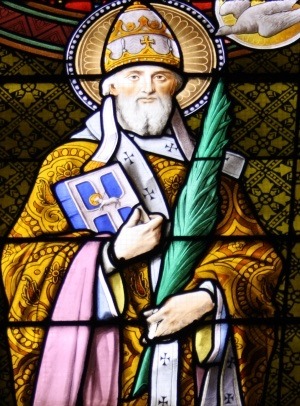
#father troy beecham#christianity#troy beecham episcopal#jesus#father troy beecham episcopal#saints#god#salvation#peace#martyrs
1 note
·
View note